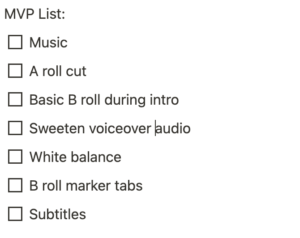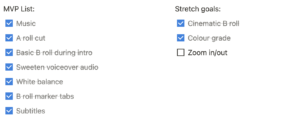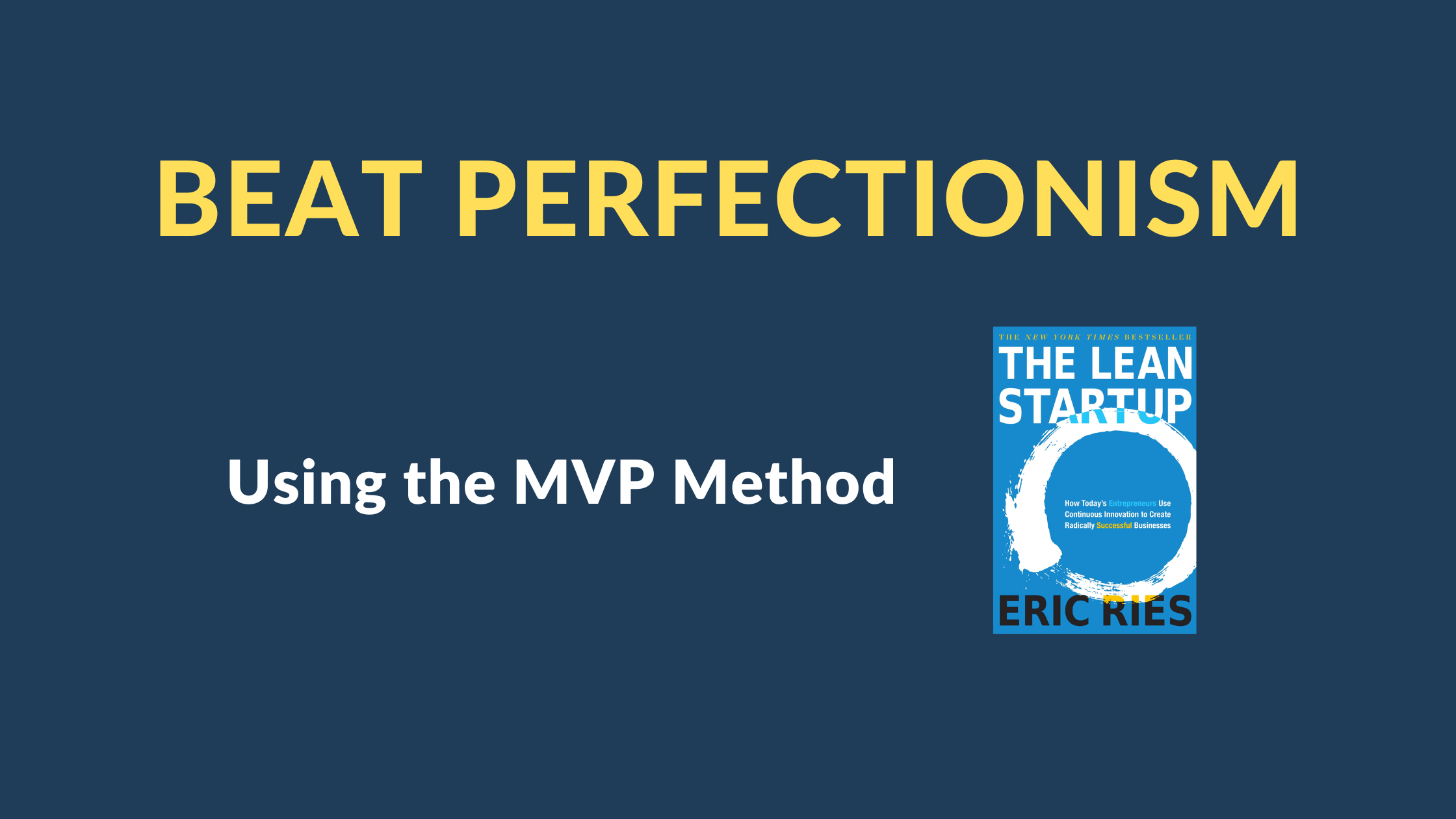Having a YouTube channel has been a fun little goal of mine since I started making videos for a living a few years ago. I thought that having video-making skills would help me, but they actually got in my way because I knew how good the videos could look if I spent the time perfecting them.
I found myself spending a lot of time editing each video: wanting to add more cuts, more transitions and flourishes to make it look just that bit better. It became a form of procrastination. Mainly driven by the insecurity about being on camera, my perfectionism always told me that I could make the video just that bit better if I spent more time editing it. I found myself missing deadline after deadline, justifying it by telling myself the video wasn’t “finished” because a small tweak had to be made. I had become my own nightmare client.
There was no way I could upload a new video every week – the amount that everyone says it takes to “make it” on Youtube.
Popularised by the book “The Lean Startup”, early-stage tech companies have taken on a culture of product development centred around rapid prototyping. The term MVP (minimum viable product) is a ubiquitous term in 2022. Under this model, you decide first on a minimum set of features that your product needs to have (the MVP) in order for a small user base of customers to test out, and only once this MVP is validated do you sink more resources into developing it further.
Since I now work at a tech startup, this concept has been front of mind. Recently, I found a way to bring it into my video production process and it’s been a game changer. Let me share it with you.
How it works
My videos used to be delayed by weeks in order to make tiny extra tweaks, which in the end would only net me a 10-20% better video overall. The truth is, they were ready a lot sooner than I decided. Time that I could’ve been spending making entirely new videos and growing as a creator much faster. If this sounds familiar to you, here’s how to make sure you deliver your work when it’s ready.
When you sit down to start editing, ask yourself: “what’s the minimum viable product that I can deliver?” – in other words, what’s the smallest amount of editing that this needs, in order to actually be watchable and deliver your message? Write these down into a list. I call this the “MVP list”.
Here’s an example of what that looked like for a recent video:


After that there’s usually a long list of things like sound effects, colour grading, extra B roll, animations and transitions I’d like to add. All of these things make the video look better but aren’t actually necessary for telling the video’s story. These go into a list called “Stretch goals”
The rule here is that everything, and I mean EVERYTHING after the MVP list is optional, and you’re only allowed to work on if you have time after finishing the MVP List. There’s no sneakily checking off any tasks in the Stretch Goals list until each and every box on the MVP List is checked.
For me, following this method does a few things:
- Ensures that I deliver the video once its actually ready, not when I “feel” that it’s ready.
- Motivates me to finish the MVP editing quickly, because then I’ll get to work on the stretch goals that make the video look better.
- My creativity isn’t stifled, because I still get to imagine what the video could be if I don’t have time as a limitation.
Here’s what the same project looked like by the time I uploaded the video:


Notice how some of the Stretch goal items were checked, but not all. That’s all I had time for before my deadline this time. It’s totally okay, because the MVP list was well and truly complete!
Conclusion:
I’ve outlined how to use this method for video editing. But it can be applied to other things too: blog writing, journalling, working out etc. The time we have to work on anything in our lives is finite and precious, and we should treat it as such. It’s important to state clear goals for finishing a task, otherwise Parkinson’s law kicks in and it ends up taking all the time we allocate to it, leaving less time for other important things in our lives like spending time with loved ones.
Think about your own life, your own hobbies and your work. Do you have anything you’re working on for a little bit too long to get only marginally better results? If you’d like to get more output (it’s okay if you don’t – remember to enjoy the process), you might want to consider trying this approach.



